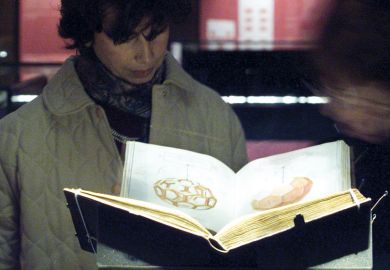My seven-year-old returned from school last week waving a mathematics syllabus. Over the next three years, she will learn to multiply two-digit numbers in three different ways. If anything will confuse all but the swiftest of learners, it must surely be having to learn a new algorithm each year. This approach wastes two years during which more advanced material could be covered, and has consequences throughout the mathematical education of a UK student. I therefore sympathise with James Robinson, author of An Introduction to Ordinary Differential Equations . His stated motivation for writing the book is that he could not find a suitable text that covered less-advanced first-year undergraduate mathematics topics at length. Indeed, the first 40 per cent of the book covers material previously firmly embedded in A-level study.
Differential Equations with Mathematica by Martha Abell and James Braselton also deals with contemporary first-year undergraduate mathematics courses in differential equations. Both books cover equations of first and second order, numerical solutions, coupled linear and nonlinear systems of equations. There, however, the similarity ends.
Robinson’s approach is straightforward but includes novel examples. When discussing resonance, he chooses not to discuss the clichéd Tacoma Narrows Bridge collapse, but uses the marching-related failure of the Broughton suspension bridge in 1831. Continuing the design theme, London’s Millennium Bridge features as one of the many exercises and provides the jacket illustration.
The middle sections cover series solutions, numerics and difference equations. To this point, critics might comment that much of the material could be found in the plethora of texts containing “mathematics”, “engineering” and “advanced” in the title. However, the style of the final two sections, covering coupled linear and nonlinear equations, with hints of what can be done later, directs the book at mathematicians.
The very title of Differential Equations with Mathematica rules out its use on many courses. But the authors have ecumenically written an almost identical book involving Maple. Titles using Matlab also exist.
Linking the learning of fundamental topics so firmly with computer packages runs the obvious risk of germinating mathematical couch potatoes. Courses now often involve students “working through” pre-prepared computer notebooks. Theoretically, this “innovative” solution satisfies the nebulous concept of “student-centred learning” while minimising the associated increase in staff workloads.
In practice, however, some students sit, chins in hands, rhythmically tapping return keys, staring blankly at the screen. Finding that this is not the Game Boy entertainment they expect from university, they fire up their MP3 players and retreat into the Darkness.
Some readers will find the repeated interruption of basic definitions and examples with code in Differential Equations with Mathematica extremely distracting. Conversely, the presence of code tempts the motivated student into active interaction. Rather than passively accepting the complexity of a dynamical system, they can easily plot the trajectories to understand the structure better. Faced with the Fourier series expansion of a discontinuous function, for example, they observe the Gibbs phenomenon experimentally. It is that type of student who will benefit most from this text.
Interestingly, this book contains many examples rooted in biological systems. It deals with Fourier series, Laplace transforms and partial differential equations, and so it can be used to teach engineers. One concern is that the nomenclature of notebooks on the accompanying CD does not appear to correspond with the printed book.
The contrasting approaches of these two texts indicate that undergraduate mathematics is again on the cusp. A little-noticed statement in the recent Tomlinson report suggests that the A-level syllabus will shrink by a third in the new diploma.
If the recommendations of this report are implemented in full, I fear that by the time my overmultiplied daughter leaves school, Robinson will have had to write another book.
Christopher Howls is senior lecturer in applied mathematics, Southampton University.
An Introduction to Ordinary Differential Equations. First edition
Author - James C. Robinson
Publisher - Cambridge University Press
Pages - 399
Price - £65.00 and £24.99
ISBN - 0 521 82650 0 and 53391 0



